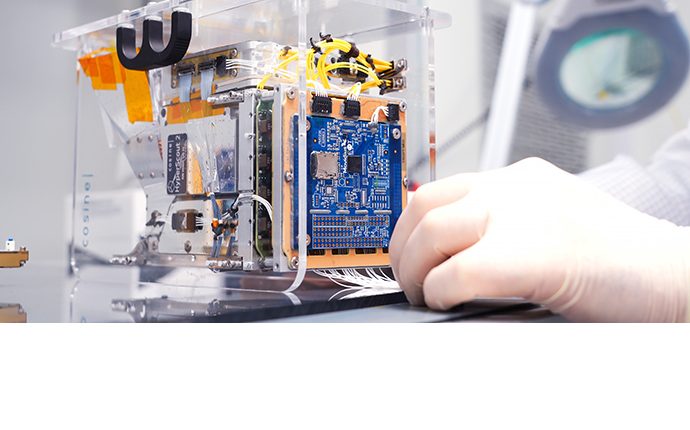Intel, the company which decided to sell its NAND business to focus on the AI side, has tried to deliver on that promise with a tiny experimental satellite called PhiSat-1, which was launched into sun-synchronous orbit on Sep 2. The first-of-its-kind satellite is on a mission to monitor polar ice and soil moisture, and is also testing inter-satellite communication system to create a future network of satellites working in unity. Today, Intel highlighted its role in expanding the satellite’s capabilities.
The experimental satellite was launched by Arianespace in its rideshare demonstration mission, which also included 45 other similarly sized satellites.
The satellite contains a new hyperspectral-thermal camera and onboard AI processing, which is made possible by Intel® Movidius™Myriad™ 2 Vision Processing Unit (VPU). The same processing unit is already being used in many smart cameras here on Earth. The VPU is going to handle large amounts of data in order to save satellite bandwidth.
The highly capable hyperspectral-thermal camera can capture images with high detail and accuracy; however, two-thirds of the Earth is covered by clouds in its atmosphere. These clouds become a hindrance when capturing images of the planet’s surface from space. This results in multiple useless images which are obscured by clouds, and a few useful images of what the scientists intended to capture.
The communication technologies are yet to catch up with the development of camera technologies which continue to spawn sensors capable of producing more and more detailed images with a substantial increase in file size. This means that it gets increasingly difficult to download these images from satellites with the limited amount of available bandwidth.
It usually takes hours or days to download the data from the satellites, which is later sent for a ‘sorting process’, wasting precious time. The onboard AI effectively solves this problem by detecting images which are obscured by clouds, and only sending data that is valuable. This method can result in a significant 30% of downlink bandwidth savings.
The Irish startup Ubotica was involved in building and testing the AI technology, working in partnership with Cosine, along with the University of Pisa and Singergise.
Every chip that is intended to be sent to space is designed with keeping radiation exposure in mind, which often results in technology that is generations behind the current ones. Intel’s Movidius™Myriad™ 2, which wasn’t designed to be deployed in space, surprisingly passed the radiation test at CERN with flying colors. It required no additional modifications to be considered space-ready.
AI technology can do wonders in space: saving bandwidth, doing all the intelligent processing and making complicated tasks easier. Even though AI has already taken over the world (in a metaphorical sense), it is still very new to space. These new developments can open up new avenues, and can take human space exploration to a whole new level.
The Tech Portal is published by Blue Box Media Private Limited. Our investors have no influence over our reporting. Read our full Ownership and Funding Disclosure →






